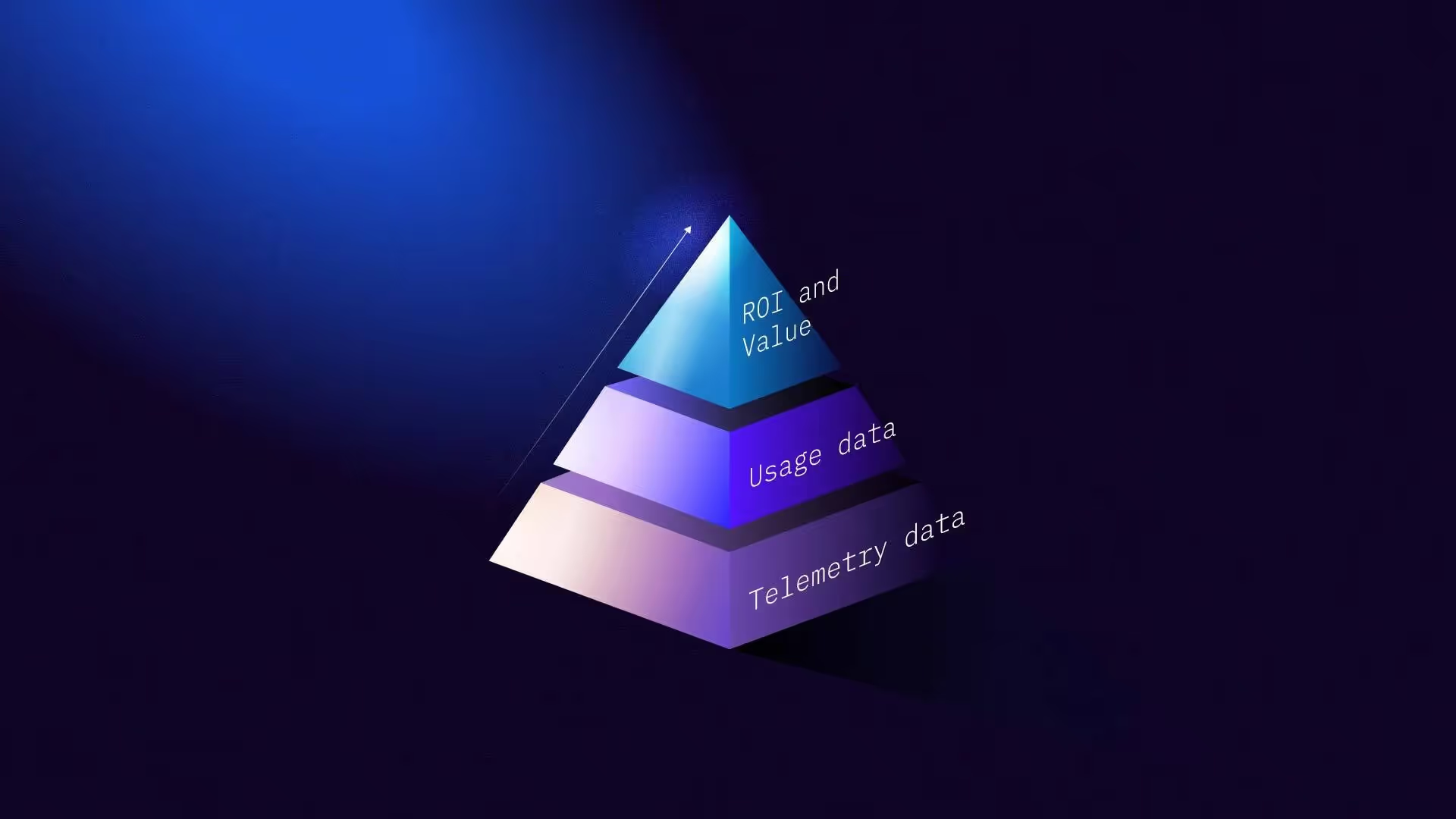Nikola Mijic, Co-founder & CEO of Matik Inc., is our guest on this episode of The Launch Station. Prior to co-founding Matik, he had an interesting journey, starting off as an implementation specialist at Bluenose before moving to LinkedIn and joining their Insights team. At LinkedIn, he worked on building data and narratives for customer success, sales, and solutions teams.
Nikola is passionate about leveraging the power of data to enable CS and customer onboarding teams to get to value faster.
On our show, Nikola talks about:
- The role of data in customer success and customer onboarding
- How data can help you get customers to value faster
- The benefits of incorporating data-driven elements in your presentations
- How teams can guarantee data accuracy during QBRs
… and more. Tune in now!
Here are Nikola's insights on optimizing customer journey through data and shaping impactful success narratives.
Ever wondered why movies have such a lasting impact on us?
Why do the sad ones make us cry, and the funny ones make us laugh uncontrollably?
If you think it's because of the emotions they evoke, you're only partially right. While emotions play a role, it's really the power of storytelling that draws us in and keeps us thinking long after the movie is over. It’s the writing that’s designed to evoke specific emotions in the audience.
Storytelling is pervasive; human beings are full of stories. So it should come as no surprise that the data-driven world of business is embracing it, too.
Called ‘data storytelling,’ it’s the practice of creating meaningful narratives from raw data. It injects cold numbers and statistics with human emotion, context, and relatability.
When applied to customer onboarding and success, data storytelling can turn information into actionable insights, which, in turn, can transform a company's customer relationship. The purpose of reporting is to help customers see the value. Good data guides decision-making and becomes a fundamental part of your operational rhythm.

Role of data in customer success
Data is crucial in guiding customers towards achieving their objectives.
For example, if a customer has three different objectives, you need three data points to demonstrate how they have accomplished these goals.
However, it is important to remember that presenting data alone is insufficient. We should instead focus on connecting the dots–telling a compelling story– to help customers understand how our offering has helped them reach their desired outcomes.
One key area where your Customer Success team can employ this approach is during business reviews with customers.
They could demonstrate how this data ties into to the value you provide and how that value connects back to the customer's objectives. Developing a consistent narrative that can be applied to multiple customers is a powerful way to scale this approach.
Explaining the ‘why’ of using data
Effectively engaging with stakeholders, whether in customer success, operations, or analytics, involves guiding them through the 'why' behind the need for specific data. Given their myriad tasks and priorities, it's crucial to present stakeholders with data in the right context to make informed decisions about data priorities.
Much like constructing a compelling business case for customers, you need to underscore the importance of the 'why' behind prioritizing this data. Articulate how it will directly influence customers and renewals, showcasing the connection to tangible company goals.
Scaling the use of data - The one-pager approach
In the enterprise business model, where the customer base is large, it is important to determine the key message and data that will resonate with customers. What matters to an enterprise may not be significant to a small or medium-sized business (SMB). Therefore, it is essential to understand what you want to achieve by presenting specific data points. To ensure you’re able to cut through the noise, Nikola recommends using a concise, one-pager approach.
This one-pager should allow you to showcase adoption, value, and return on investment (ROI) without needing a formal meeting. By consistently sharing this one-pager every month, you get to maintain a cohesive story and generate meaningful conversations with customers and internal stakeholders. While meeting with every customer personally may not be possible, these data-driven narratives catalyze engagement and enable effective communication.
Using data for scalable customer success stories
Data isn't just a collection of numbers; it's a storyteller in its own right. It weaves the narrative of customer success from the first steps of customer onboarding to the sustained journey of value realization. The data becomes a roadmap guiding customers and businesses towards shared objectives. It bridges the gap between stakeholders and analytics, making data a universal language of success.
From the inception or "why" to the execution or "how," data shapes scalable, adaptable, and inspiring narratives. It enables us to create compelling onboarding experiences and success stories, fostering customer loyalty and organizational growth.
It is important to determine the desired outcome for these narratives and understand the key milestones that trigger their creation.
For example, transitioning from the onboarding stage to the adoption stage could be a significant signal to generate specific content for a customer account. Mapping out the customer lifecycle and defining each stage's entrance and exit criteria will help identify the content to generate and for which accounts. This initial planning is crucial before attempting to scale.
Additionally, it is vital to recognize that data is not flawless. Just like products and roadmaps, narratives need iteration. Testing out the narrative with a control group of customers is advisable to gather their feedback and gauge their response. This will help refine the narrative and ensure it resonates with the target audience. Avoid assuming that what you find appealing will strike a chord with customers. This testing and feedback loop lets you develop narratives that meet your customers ' needs.
Once you have identified the triggers, refined the narrative, and tested it with customers, you can scale these efforts.
How can you use data to show customers the value of ROI?
Here are a few best practices to consider:
1. Connect ROI to customer objectives: It's essential to highlight how the ROI of your offering aligns with your customer's goals. Don't just present numbers; explain how they translate to outcomes that matter to them.
2. Utilize benchmarking: Benchmarking is a powerful tool to contextualize ROI and demonstrate value. By comparing your customers' performance to similar organizations or previous periods, you can showcase their progress and success.
3. Consider different benchmarks: Benchmarks don't have to be limited to industry or company size. You can also use time-based benchmarks, such as comparing current data to previous years or quarters. This provides valuable insights into progress and growth.
4. Showcase customer comparisons: Another effective way to demonstrate value is by comparing customers' performance to others within your client base. This helps put their achievements in perspective and shows how they stack up against their peers.
Challenges with product adoption
When examining adoption data, two potential narratives emerge. The first suggests that the customer team isn't embracing the tool, while the other points to a failure in change management.
Addressing issues early allows for effective solutions. Waiting until the last minute, like just before an upcoming renewal, can make recovery extremely challenging. People often hesitate to discuss unfavorable news, but being open, particularly during implementation and onboarding, can lead to productive discussions. Some best practices to handle challenges in team adoption include:
- Share bad news promptly: Don't wait if your product isn't well-received.
- Avoid last-minute surprises: Waiting until renewal makes problem-solving tough.
- Overcome hesitation: Be open about challenges like low adoption rates.
- Transparency in implementation: Address issues openly during onboarding.
- Engage in dialogue: Encourage collaboration to improve adoption.
- Start early: Initiate conversations in the early stages for the best results.
Elevating customer health and ROI: A data hierarchy approach
Nikola also offers a data hierarchy drawing inspiration from Maslow's hierarchy of needs.
At the base of this pyramid is telemetry data, which includes basic account information collected during the pre-sales and onboarding phases. The next level is usage data, and ROI and value are at the top of the pyramid.
Telemetry data - understanding the foundation
This data is collected during the pre-sales and onboarding phases, helping you comprehend why customers chose your product and what they aim to achieve. The fundamental building block sets the stage for the journey ahead.
Usage data - tracking the path to success
Moving up the pyramid, we encounter usage data. During onboarding, it's about adoption and reaching key milestones. This data paints a picture of how customers utilize your product or service. It's the vital middle layer that bridges intentions and outcomes.
ROI and value - The apex of customer success
Reaching the peak, we find ROI and value. Here, we transform usage data into tangible results that align with the customer's initial objectives. It's about demonstrating the real value your offering brings, solidifying their satisfaction and success.
You can rely on a range of tools to navigate this hierarchy. Salesforce provides both qualitative and quantitative insights. Business intelligence tools like Tableau, Looker, and Mode store usage data, making it easily accessible. Support and onboarding tools offer additional insights, allowing you to paint a comprehensive picture of customer health and success.
How you can guarantee data accuracy during ABRs?
Executive meetings are high-stakes affairs, none more so than the Account Business Review (ABR). These sessions can shape the future of your customer relationships and impact your bottom line. That's where strategy comes into play, and one indispensable tactic is pre-wiring.
Pre-wiring isn't about fancy tech or intricate diagrams but collaboration. It involves engaging your champions early in crafting your narrative or business review deck. Before entering that critical executive meeting, you should have sought their feedback and insights. This collaborative approach ensures alignment with what executives care about.
For instance, when crafting a business review for a customer, you should reach out to your champion or other individuals you regularly collaborate with to gather their thoughts on the narrative. Ask them to review the data and ROI metrics and anticipate potential pushbacks from the executives.
This pre-wiring stage establishes the involvement of champions and stakeholders who can also step in during the meeting if the executives raise concerns about metrics or value generated. Their involvement enables them to advocate for the truth behind these metrics and reinforce the value achieved through your product.
How the right technology can help you craft customer onboarding narratives?
Drawing from insights gathered through customer interactions, we've refined our approach to onboarding. We prioritize understanding each customer's objectives and crafting narratives that resonate. We've successfully outlined key milestones and provided a clear 30-day roadmap for mutual achievement.
Tools like Rocketlane are designed to help you with this approach to narrative building.
For instance, if your the main goal is to onboard a template, Rocketlane outlines steps such as connecting to a data source, creating dynamic content, tagging the template, and conducting testing. You can track these milestones and analyze the data to identify who is progressing and who may need assistance reaching their targets.
Seamlessly manage and enhance your onboarding journey with Rocketlane, ensuring efficient collaboration and success tracking at every step.
Try it today!











